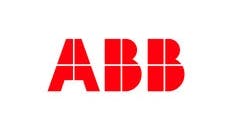The Ten Top Microgrid Stories for 2020 Indicate Rise in Curiosity About Microgrids Among Customers
Microgrid Knowledge is seeing an influx of a new kind of reader to the site, as indicated by the ten top microgrid stories for 2020. We believe the shift reflects a larger trend in the microgrid industry.
In earlier years, our most-read stories tended to reflect the interests of the industry, so they were about projects, technologies, innovations, business models and government policies.
This year marked a big change. Our top 10 list features several 101 stories, those that provide basic education about microgrids, the kind of information sought by the microgrid customer, those exploring microgrids for the first time.
This tells us that customers — typically businesses, institutions and communities — are now actively trying to learn about microgrids, searching for information to make an informed choice.
Why the shift? There are several reasons. Power outages related to wildfires and coastal hurricanes continue to reveal electric grid vulnerabilities. In addition, the pandemic has heightened awareness that electricity is crucial to maintain the virtual connectivity now essential to society’s functioning. We may also be witnessing the fruits of the steady educational efforts by the industry in recent years.
Whatever the case, the microgrid customer has arrived. We see this in our readership, but also hear about it from microgrid companies. And we’re witnessing the signs of a healthy, growing market to serve them — the formation of microgrid startups and the entry of large players.
The readership shift toward 101 articles could be explained away if we had posted many of these stories for the first time this year. New stories, after all, tend to get attention as we promote them in our newsletters and on social media. But for the most part, the 101 stories were published two or three years ago and rediscovered this year by readers. The top read story for 2020, the blockbuster this year, was first published in 2017. Despite its age, the article attracted 53% more pageviews than the second place article. And the information couldn’t be more basic; it defines the term ‘microgrid.’ (We did update some of the information in the article this year, which is why it’s dated 2020.)
Two other 101 articles, “What is a Virtual Power Plant?” and “Microgrid Benefits: Eight Ways a Microgrid Will Improve Your Operation…and the World,” were published in 2018. Are Microgrids Expensive? is the only 101 story on the list that was published in 2020.
Readership and conference numbers up
We also saw a significant rise in overall readership and conference attendance this year. Pageviews on Microgrid Knowledge grew 23% year over year. Conference growth was even more dramatic and was largely due to our pivot to virtual events because of the pandemic. Initially, it was a challenging effort, but it turned out to be a blessing in disguise. Going virtual made attending easier for many and expanded our conference audience 1,500%. And, by the way, the conference session that was titled, “Introduction to Microgrids: 101 Workshop” attracted the largest single audience at Microgrid 2020 Global.
Below are the top 10 most read Microgrid Knowledge stories for 2020. We’re curious what you think the article mix says about industry trends. Please post your thoughts in the comments section below or on our Microgrid Knowledge Linkedin Group.
List of Ten Top Microgrid Stories for 2020
How is a microgrid defined? A few different definitions exist. Here we set out to explain what we mean by ‘microgrid’ at Microgrid Knowledge.
2. What Schneider Electric’s Recent Move Reveals about the Microgrid Market
To understand the movement of the microgrid industry, it’s instructive to watch it’s large players, particularly, right now, Schneider Electric. The company has been navigating the industry’s tributaries for the last five years and seems to be signaling it sees an ocean ahead.
3. What the $11B Hitachi ABB Joint Venture Means to Microgrids
Several global technology giants are vying to capture the fast-growing microgrid market, and now the coming together of two — Hitachi and ABB — could reconfigure the landscape.
4. Microgrid Benefits: Eight Ways a Microgrid Will Improve Your Operation…and the World
Microgrids serve industries, institutions, communities and other customers in a range of ways. Here we look at eight main microgrid benefits – from keeping the lights in a storm to lowering energy costs to improving community well-being.
5. Distributed Energy Scores Big Win in US Wholesale Markets with FERC Order 2222
The Federal Energy Regulatory Commission issued Order 2222, its much anticipated ruling that paves the way for aggregated distributed energy resources to compete alongside traditional power plants and other grid resources in wholesale markets.
6. Xcel Energy to Build 7 Community Microgrids. Negotiating with Siemens and Fluence
Xcel Energy is seeking regulatory approval to move forward with seven microgrids, at a cost to the utility of $23.4 million, chosen from a community resilience solicitation that the Colorado utility issued in May.
7. What is a Virtual Power Plant?
A virtual power plant turns on its head the traditional idea of relying on big, centralized power plants for predictable power. But what is it exactly? And who uses virtual power plants and why?
Asking ‘Are microgrids expensive?’ is a bit like asking what rocks cost. Are we talking about diamonds or driveway gravel? Any discussion tends to be a long one. There is no elevator pitch answer for three main reasons.
9. Hydrogen Becomes More Viable as a Microgrid Fuel
Hydrogen is becoming more viable as a microgrid fuel source, although few hydrogen microgrids exist yet and cost remains a challenge, industry members say.
10. FEMA Offers $500M in Resilience Grants. An Opportunity for Microgrids & DERs?
The US Federal Emergency Management Agency announced a $500 million infrastructure grant program that offers opportunities for microgrids, energy storage, backup power, and other advanced energy solutions.








